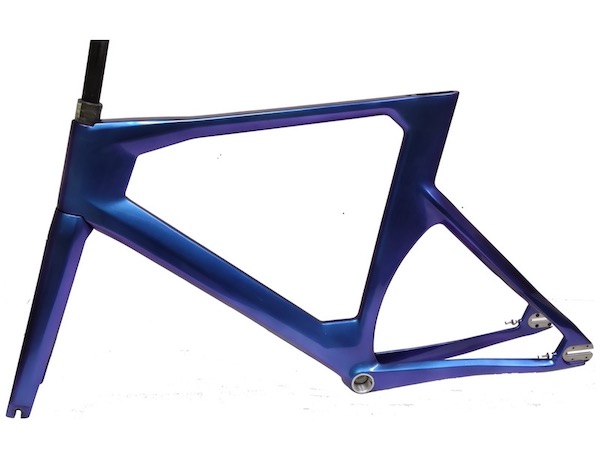Categories
New Blog
Tags
 Cyclocross bikes and Gravel bikes look similar from a distance… However there are key important differences between the two. Cyclocross bikes have been around a long time. For most of the time cyclocross bikes have been around, they have used cantilever brakes, these allowed a good amount of clearance for tyres clogged up with mud and debris, they were also fairly light. Cantilever brakes are still used in cyclocross races, although disc brake are now very popular. The sport was niche and has become more mainstream in recent years. Cyclocross races last for less than an hour and involve twisty, muddy course often with obstacles such as board jumps and ditches and sections which need to ‘shoulder’ the bike – carry on your shoulder. So, cyclocross bikes tend to have, stiff framesets, a higher bottom bracket, race geometry with twitchy fast handling and no bottle cages. Cyclocross tyres tend to be 28 – 35 mm wide, 32mm maximum for UCI sanctioned cyclocross events.
Cyclocross bikes and Gravel bikes look similar from a distance… However there are key important differences between the two. Cyclocross bikes have been around a long time. For most of the time cyclocross bikes have been around, they have used cantilever brakes, these allowed a good amount of clearance for tyres clogged up with mud and debris, they were also fairly light. Cantilever brakes are still used in cyclocross races, although disc brake are now very popular. The sport was niche and has become more mainstream in recent years. Cyclocross races last for less than an hour and involve twisty, muddy course often with obstacles such as board jumps and ditches and sections which need to ‘shoulder’ the bike – carry on your shoulder. So, cyclocross bikes tend to have, stiff framesets, a higher bottom bracket, race geometry with twitchy fast handling and no bottle cages. Cyclocross tyres tend to be 28 – 35 mm wide, 32mm maximum for UCI sanctioned cyclocross events.
Gravel cycling, on the other hand, is much younger than cyclocross.Their frameset geometry is more relaxed, handling more stable and predictable – ideal for riding long gravel tracks. Gravel bikes can be ridden for day long adventures because they are comfortable and have water bottle cages and rack, guard mounts for bike packing or riding in the winter months. Many gravel bikes feature wider, flared handlebars, for added stability and wider tyres 35mm – 44mm for more grip and comfort. Some gravel bikes feature (smaller) 650b wheel size instead of 700c, to allow for bigger tyre sizes. Disc brakes are fitted on all gravel bikes, entry level gravel bikes usually feature cable operated discs, mid- range and upper level gravel bikes are fitted with hydraulic disc brakes.
Gravel vs. Cyclocross – The Difference
|
Gravel Bike |
Cyclocross Bike |
|
Gravel biking is a very young discipline that has only gained in popularity since the 2010s. Gravel bikes offer a very versatile range of applications – from racing to bikepacking tours. Gravel bikes are therefore aimed at both ambitious athletes and casual riders. Gravel biking mainly takes place on sandy roads, dirt tracks and gravel paths. The distances in gravel races often range over several hundred kilometres. Gravel biking was not officially recognised as a discipline by the UCI until 2021. Gravel races are usually regulated by the respective race organisers. |
Cyclocross has been around since the beginning of the 20th century. Over the decades, cyclocross has become a winter training alternative for road racers and a competitive sport. Cyclocross bikes are therefore primarily aimed at ambitious cyclists. Cyclocross competitions usually take place on marked circuits and have high technical requirements. Cyclocross races are usually limited to a duration of one hour. Cyclocross is regulated as a discipline by the UCI. |
Gravel Bikes and Cyclocross Bikes – The Technical Differences
But cyclocross and gravel biking differ not only in terms of racing and their range of applications, but also in terms of their technical requirements. While a cyclocross bike frames with its aggressive geometry and minimalist equipment – similar to a road bike frame – is primarily designed for ambitious sporty routes, speed or even competitive sports, a gravel bike is above all a comfortable all-rounder. It’s a bike for fun outings on any occasion. This even applies to gravel race bikes, which are significantly more comfortable than cyclocross bikes despite their sporty aims due to the much longer distances covered on gravel rides.
At first glance, however, gravel bikes and cyclocross bikes seem confusingly similar. Both have the classic road bike look with road handlebars; both roll along the terrain on studded tires. Nevertheless, there are small but subtle differences due to their respective requirements discussed above. There are five areas in particular: the frame geometry and shape, the tire clearance, the frame material, the mounting options for accessories incorporated into the frame, and the equipment in terms of components.

Gravel Frames and Cyclocross Frames Compared
These differences between gravel bikes and cyclocross bikes are particularly evident in their frames. Due to the different requirements in the respective disciplines, gravel bike frames and cyclocross frames have different designs and technical refinements. This is evident from the frame geometry: at first glance, neither gravel nor cyclocross frames differ much from the classic road bike frame. The typical steering angle on gravel and cyclocross bikes is usually 73 to 74 degrees. The seat angle is also usually 73 to 74 degrees. As a rule, the shorter the top tube, the more upright and comfortable the rider will be.
Gravel Frames Have a Longer Wheelbase, Cyclocross Frames Have a Higher Bottom Bracket
One of the differences in the geometry of gravel frames and cyclocross frames is the longer wheelbase on gravel bikes, which is intended to provide more stability off-road. Cyclocross bikes, on the other hand, have a shorter wheelbase, which gives them more manoeuvrability on tight corners. Especially on the often sharply-angled cyclocross race tracks, this advantage is not to be sneezed at. Another typical feature of gravel bikes is the lower bottom bracket. Together with the longer wheelbase, it provides a lower centre of gravity, which also increases stability and smoothness when cycling. Cyclocross bicycles usually have a higher bottom bracket. That’s because in cyclocross racing, you occasionally have to jump over obstacles – a higher bottom bracket, combined with a greater distance to the ground, helps.
Another difference between gravel bikes and cyclocross bikes in terms of frame geometry is the frame shape: cyclocross frames are usually constructed with a large, open frame triangle with a straight top tube, so you can easily shoulder and carry them over obstacles in cyclocross races. With gravel bikes, on the other hand, the bike companies usually allow themselves more creative freedom in terms of design and frame shape.
Gravel Frames Have More Tire Clearance than CX Framesets
Cyclocross frames also need to be stable off-road, but they differ from gravel frames in one other crucial way: tire clearance. According to the official UCI regulations, the tire width in cyclocross is limited to 33 millimetres. The typical tire width for cyclocross bikes is therefore usually between a sporty 32 and 35 millimetres ex works. The tire clearance on cyclocross frames is thus usually significantly lower than on today's gravel bikes, on which are often mounted 45 to 50 millimetre thick or even wider tires. There is a good reason for this difference: the wide tires give gravel bikes more traction and make them more comfortable on uneven roads and trails. Even on a gravel bike loaded with bikepacking bags, larger-volume tires have a positive impact on handling. A cyclocross bike, on the other hand, is a pure sports machine and is almost always ridden unloaded. Besides this, the tire width, which is specified in the UCI regulations due to the historical connection between cyclocross and road bikes, ensures consistent frame proportions.
Gravel Frames Have More Mounting Points than Cyclocross Frames
Another crucial difference between gravel bike frames and cyclocross frames is the mounting options for accessories. While some cyclocross bikes have brackets for extra water bottles, mudguards and pannier racks, most cyclocross bikes only have room for one or two water bottles. And that’s simply because you don't need panniers for cyclocross racing. Instead, the bikes should be as light as possible. The situation is completely different for gravel bikes. Here, mountings for accessories such as a third or even fourth drinks bottle, screw-on bikepacking bags, mudguards and pannier racks are part of the standard equipment, so there is room for all the equipment you need for your next off-road adventure.
Gravel Frames vs. Cyclocross Frames – The Differences
| Bike Type |
Gravel Frames |
Cyclocross frames |
|
Frame geometry |
Gravel bikes usually have a more comfortable cut than cyclocross bikes, as they are used to cover longer distances. |
Cyclocross bikes are sports equipment and are designed to be aggressive. They typically have a higher bottom bracket and a shorter wheelbase. |
|
Frame shape |
Gravel bikes come with both straight and sloping top tube frames. |
CX framesets usually have a straight top tube. They are also designed with a large, open frame triangle so that they can be easily shouldered and carried over obstacles in cyclocross racing. |
|
Tire clearance |
Most gravel bikes have tire widths of 40 millimetres or more. Accordingly, tire clearance is significantly higher on gravel frames than on cyclocross frames. |
According to the official UCI regulations, the tire width in cyclocross is limited to 33 millimetres. The tire width for cyclocross bikes is therefore usually between 32 and 35 millimetres. |
|
Mounting points |
Mounts for accessories such as extra water bottles, bikepacking bags, mudguards and pannier racks are standard on a gravel bike. |
Usually these frames only have mounting points for water bottles. Some models also offer mounts for mudguards. |
|
Material |
Gravel frames, like road bike frames, are available in all materials. However, aluminium (for off-road durability) and titanium (for classic, comfortable gravel frames) are particularly popular. Gravel bike carbon frames are also becoming increasingly popular due to the growing significance of gravel road riding. |
Cyclocross frames, like road bike frames, are available in all materials. However, aluminium (for off-road durability) and carbon Cyclocross frames (for sporty cyclocross bikes) are particularly popular. |
|
Weight |
Gravel frames are not as optimised for weight as cyclocross frames. The focus here is more on sturdiness and comfort. |
CX framesets are built to be as light as possible. This lets them accelerate faster and also makes them easier to carry. |
Purchase Decision – Do You Need a Gravel Frame or a Cyclocross Frame?
So it all comes down to the details when buying a new frame for off-road drop bar riding. Whether you need a gravel frame or a cyclocross frame depends entirely on your personal preferences. If you want to build a bike for long rides on varied terrain, then a gravel frame is probably the best choice for you. If, on the other hand, you are mainly interested in cyclocross racing or ambitious training in the forest and are looking for a light and fast bike, then a cyclocross frame is probably the better choice. At xmtourdecycling you will always find a wide range for bike carbon frames variants–from fast cyclocross carbon frames to comfortable gravel carbon frames. Welcome to send your inquiry and do OEM service for your brand bike frames.